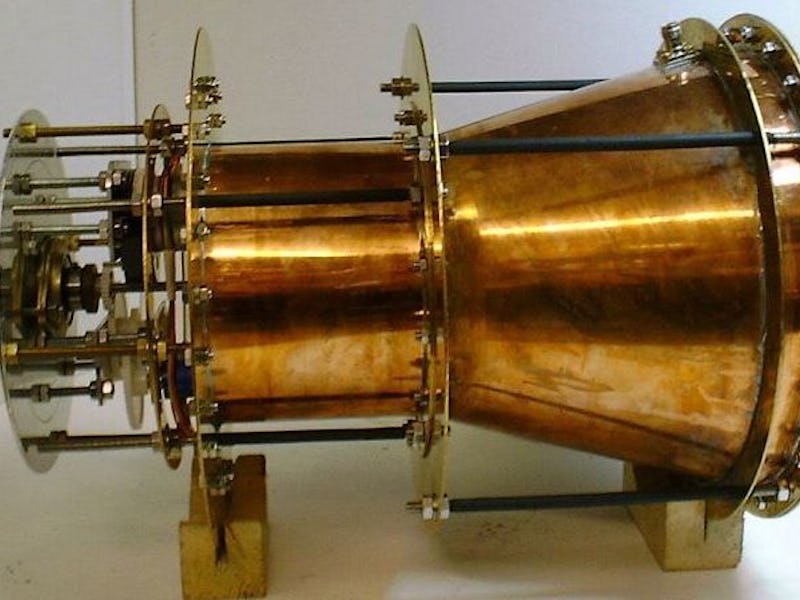Following months of speculation, NASA’s controversial EmDrive — a theoretical reactionless engine that promises to transport humanity to far away destinations in no time — may be one step closer to becoming a reality. On Friday, a research team led by Harold White presented what many skeptics thought they’d never see: a peer-reviewed paper detailing how the engine will work, published online in the American Institute of Aeronautics and Astronautics (AIAA)’s Journal of Propulsion and Power.
The Electromagnetic Drive (aka EmDrive) was first proposed in 1999 by a British inventor, named Roger Shawyer. Instead of relying on heavy propellants, this engine is propelled by microwaves that bounce back and forth inside the engine’s cone-shaped interior. With this type of technology, a trip to Mars would only take 70 days as opposed to six months via a traditional rocket.
The EmDrive has been labeled as “impossible” as it appears to go against our current understanding of physics. More specifically, it violates Newton’s Third Law of Motion, which states that for every action there is an equal and opposite reaction. But according to the newly published paper, scientists at NASA’s Eagleworks Laboratory believe their propulsion-less engine actually works. Spacecraft fitted with an EmDrive could theoretically traverse the cosmos quicker, and without consuming propellant.
But if the engine really works, it must break the most fundamental laws of physics. As such, it has faced a lot of criticism. Does the new paper truly demonstrate what the scientific community thinks of as impossible, possible?
Well, passing peer review simply means that the researchers’ methods are sound. It does not mean that the results are valid, as was the case in the BICEP-2 experiment, which confused galactic noise for evidence of gravitational waves.
At the same time, we can’t dismiss the news because passing peer review is a big step. The new paper gives us a clear picture of how the researchers set up their experiments, which will allow other experts the chance to determine whether the engine actually works or is a result of experimental error.
Aside from the peer review issue, the main criticism has been that when the device is operated, it heats up, which could produce the thrust the researchers are seeing. However, in the new paper, the engine was tested in a near vacuum, which eliminated the heating issue.
That doesn’t mean that the engine works — there are other explanations for the thrust the researchers are seeing. So far, none of the tests can eliminate all the potential sources of error.
The next step will be to test the engine in the vacuum of space. If the so-called impossible engine produces thrust there, then we could have a major breakthrough on our hands. No launch date has been set yet, but researchers are planning on sending a version of the drive up on a shoe-box-sized satellite known as a CubeSat.
